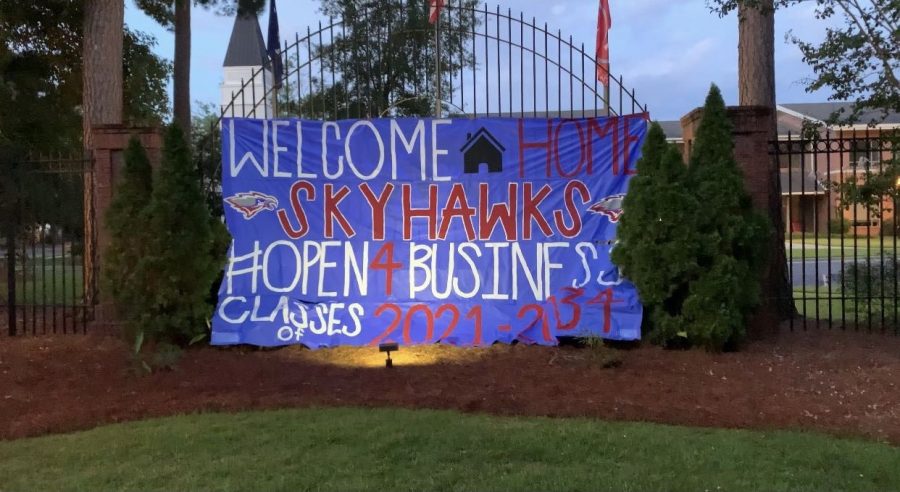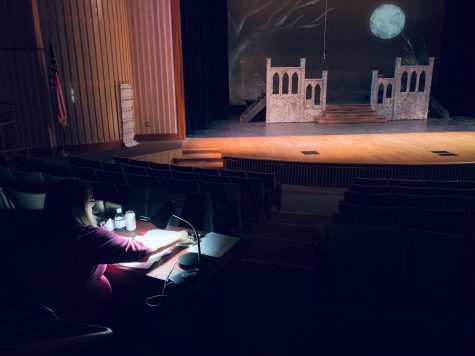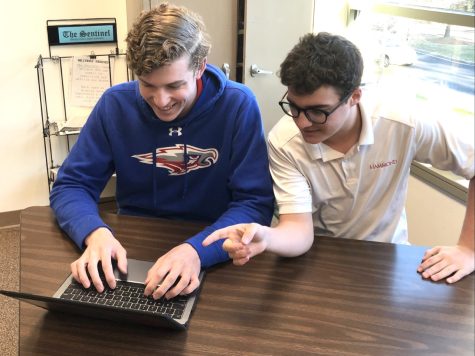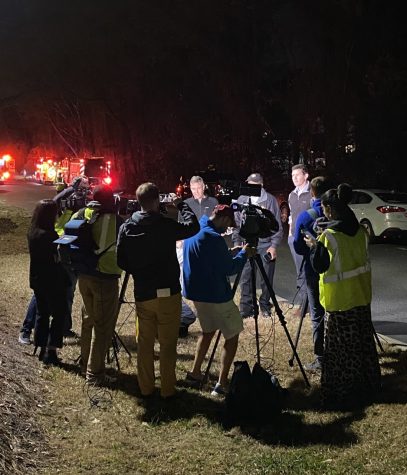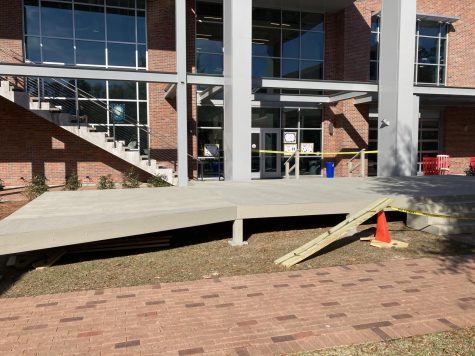Looking Back and Looking Forward: A Consideration of the Fall Semester
2020 has been a year full of uncertainty. COVID-19 arrived at Hammond’s doorstep in March, protests filled the streets of Columbia in May, and November’s presidential election split much of the country in half. The Hammond community has been affected in some way by all these experiences, but underneath it all there seems to be a prevailing sense of gratitude amongst students and faculty alike because of the ways we have been able to resume in-person schooling.
The decision to return to campus this August came with many new rules and guidelines. The two most prominent were that everyone must wear a mask at all times and remain six feet away from their peers whenever possible. Much of the preparation to return took place over the summer, as faculty and administration met frequently to plan the new protocols.
“Mr. Lumpkin and Mr. Angel worked tirelessly over the summer to come up with the best plan for us to be able to meet in person,” said Spanish teacher Sra. Lipsitz
At first, there was evidence of doubt about whether or not this would be a long-term solution. However, excitement about returning was everywhere. Students reconnected with friends, many of whom they had not seen since classes went virtual in March, and faculty were eager to see their students and fellow teachers after months apart.
To a large degree, students have been very compliant with the COVID protocols in place, and the faculty have helped reinforce these new rules. However, some struggled with the new schedule, arising challenges, and other concerns about both the school year and the world around them.
“I miss seeing the students at break and assembly,” said Spanish teacher Sra. Lipsitz. She said she usually looks forward to seeing both her former and current students outside of the classroom.
Opportunities for teachers to connect with students are more difficult this year, due to split lunch periods and break being taken out of the schedule.
“Not having a break is kind of a bummer, but it’s a small price to pay to make this school year happen,” Sra. Liptsitz said.
Echoing Sra. Lipsitz’s longing for breaks and more blocked off free time, History teacher Dr. Ruehlen said: “The lack of breaks makes me feel more tired than usual, and I think students are feeling the same way.”
To Dr. Ruehlen, the most pressing change to this year’s scheduling has been the different lunch periods because the teachers are now split amongst the two times for lunch duty and overseeing their advisory groups.
This separation has weakened the previously strong sense of camaraderie amongst the faculty members, many of whom are close friends.
“Señor Azpurua-Borras is one of my really good friends, and I have only seen him at school maybe ten times this year because he teaches in a different building and has a different lunch period than me,” said Dr. Ruehlen.
Similar to faculty, students have also been affected by the split lunch times. It has changed the student dynamic and created a growing separation between upper and lower classmen.
Senior Mason Harrington observed that student morale seemed to be affected by the absence of pep rallies and other school wide events. However, he commended students for their efforts to stop the spread of COVID.
“Students have handled the situation well, and it can be seen by the small amount of [COVID] cases we have had at Hammond,” Harrington said.
For senior Karry Zheng, the year has looked very different than he imagined it would. Karry is attending school remotely, as both he and his family believe it is the best option for him at this time. Zheng faces different difficulties than students who are attending classes in person because he must deal with vast amounts of technical difficulties on top of an altered schedule.
“My day starts earlier than most. Those of us on Zoom have to get to class around ten minutes early to make it easier for the teachers letting us in,” Zheng said.
An unexpected challenge for Karry arose during the first week of school in his dance class with Mrs. Fowler. He struggled to have enough space in his bedroom to complete the tasks asked of him, which led to the Rybarcyks creating a space in their garage-turned-gym for Karry to be able to use during dance. He says difficulties such as these have turned up multiple times, but he credits the teachers for their efforts.
“[Teachers] are very willing to help and are very patient with me while I figure things out from home,” said Zheng.
A not-so-obvious challenge that Hammond’s hybrid system has created is in the foreign language department. Sra. Lipsitz stressed how important it is for foreign language teachers to be able to hear students’ pronunciations.
“It is a bit difficult with masks and plexiglass,” she said. “Simple solutions like speaking up or repetition helps.”
Dr. Ruehlen has also run into issues with teaching students in person and virtually simultaneously. He explained that it is difficult to plan curriculums far in advance when those plans could be changed at a moment’s notice following a potential outbreak.
“When I have four to five students on Zoom and a room full of students in front of me, I am basically teaching two different classes at the same time,” said Dr. Ruehlen.
Members of the Hammond community have also expressed concern with how students act on the weekends, and the importance of continuing to follow Hammond’s COVID guidelines outside of school has become a key part of the school’s message.
“I don’t know if students are following COVID guidelines on the weekends or not, but they must be doing something right. I have had very few students out for COVID reasons,” said Sra. Liptsitz.
Others, however, have expressed more skepticism about how carefully people are following COVID rules off campus.
Zheng and others emphasized the collective responsibility our community has to take our part in controlling the virus.
Students are being encouraged by faculty and their peers to continue to be careful and make safe decisions as the first semester is coming to a close. Prevention has been a key part of Hammond’s first semester success.
“People should wear their masks. There is really no excuse not to because of how simple it is to do,” Zheng said.
